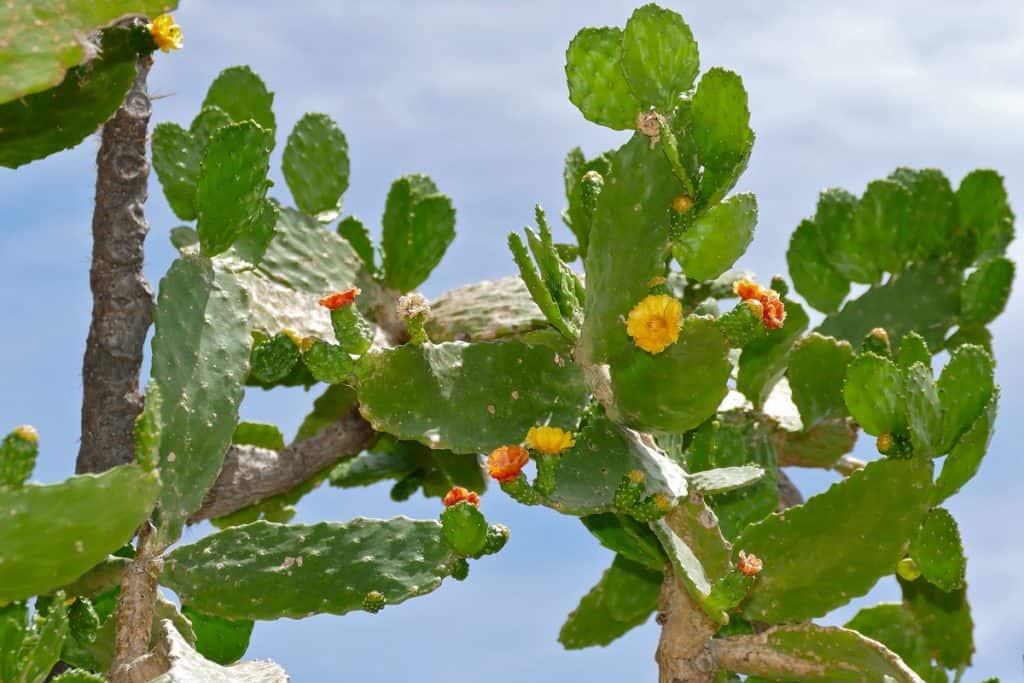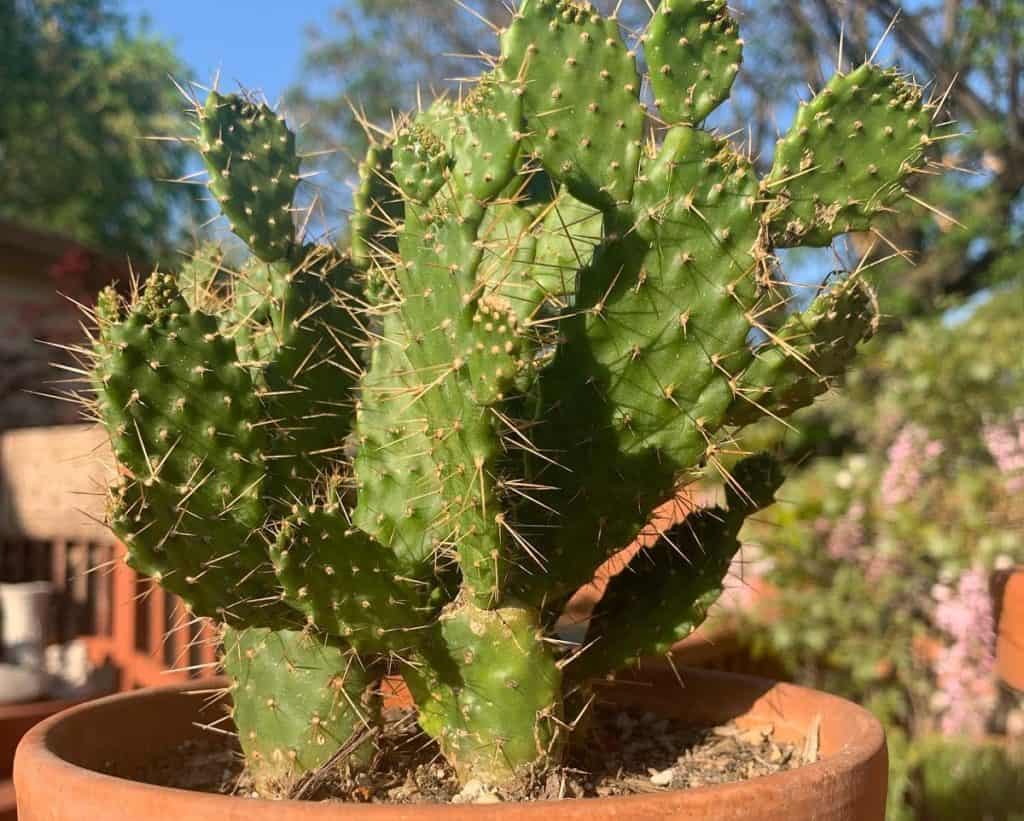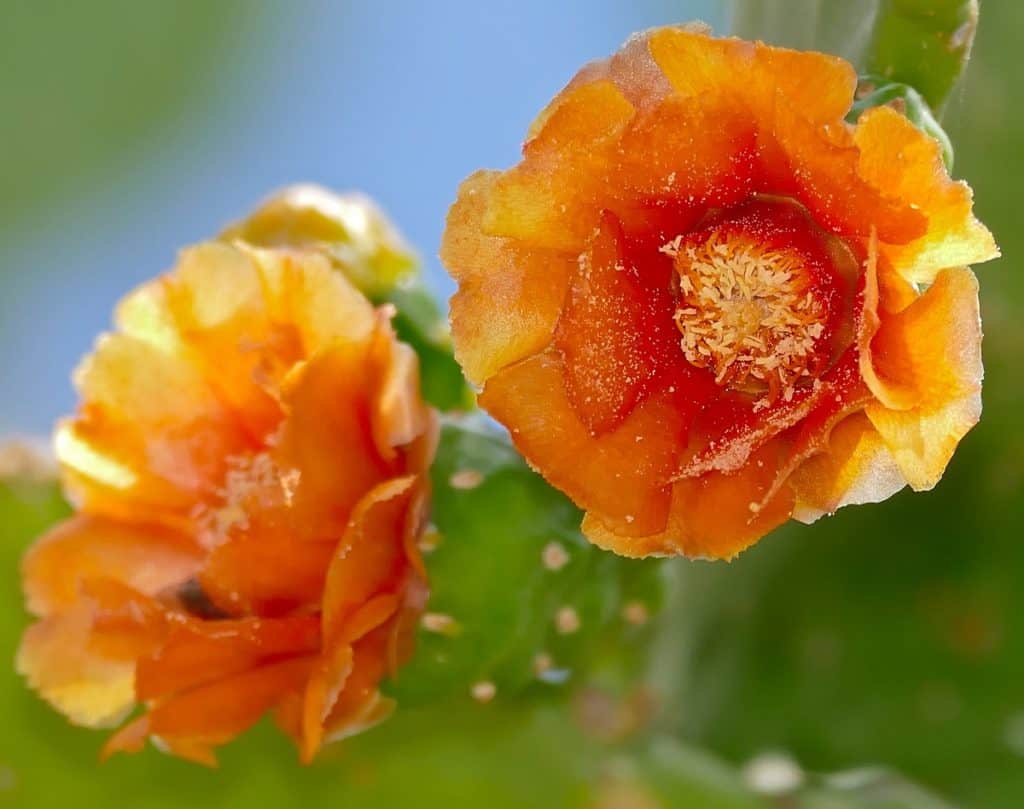Opuntia falcata: When Spines Meet Splendor in the Desert Landscape
Have you ever seen a cactus that looks like a little prickly tree? Well, let me introduce you to the one-of-a-kind Opuntia falcata – a quirky and captivating desert beauty from the sunny regions of Haiti. This eye-catching plant rocks a unique tree-like form, decked out with vibrant reddish flowers blooming amongst its spiny stems. With its striking appearance and tough-as-nails nature, Opuntia falcata is the perfect pick for adding some serious wow factor to your cactus or xeriscaped garden. Get ready to be charmed by this prickly showstopper!

Contents
About Opuntia falcata
Also known as the Caribbean tree cactus or tree opuntia, Opuntia falcata is a rare species that boasts a tree-like form with a distinctive greenish-brown stem that becomes visible as the plant matures. It features several central stems adorned with pads or stem segments, each bearing an array of spines and producing stunning reddish flowers that bloom during the day.
Related Post:
195 Opuntia Varieties [With Pictures]
How to Care for Opuntia falcata
Light
Like most cacti, Opuntia falcata craves bright, direct sunlight. Provide it with a spot that receives at least 6-8 hours of direct sunlight daily. If you live in an area with scorching summers, provide some afternoon shade to prevent sunburn. You can also use a grow light to supplement natural light during the winter months.
Watering
Opuntia falcata is drought-tolerant, so it doesn’t require frequent watering. During the spring, summer, and fall, water thoroughly every 7-10 days, allowing the soil to dry out between waterings. In the winter, reduce watering to once a month or when the soil is completely dry. Avoid splashing water on the stems to prevent rot.
Therefore, these plants do not require frequent watering; in fact, they’re morzash water on the plant’s stem while watering; doing so could result in rotting.
Soil
Choose a well-draining soil mix specifically designed for cacti. A blend of coarse sand, perlite, and succulent soil will ensure proper aeration and drainage, preventing root rot. Remember, Opuntia falcata thrives in nutrient-poor, rocky soil, so don’t overdo it with rich potting mixes.

Fertilizer
During the growing season (spring to fall), feed your Opuntia falcata with a balanced, water-soluble cactus fertilizer every 4-6 weeks. Avoid fertilizing in winter when the plant is dormant.
Temperature and Humidity
Opuntia falcata thrives in hot, arid conditions with temperatures ranging from 70°F to 95°F (21°C to 35°C). Provide good air circulation and low humidity to replicate its natural desert environment.
Pests and Problems
Watch out for common cactus pests like mealybugs, spider mites, and scale insects. Diseases like stem rot and anthracnose can also affect Opuntia falcata. Proper watering, well-draining soil, and good air circulation can help prevent most issues.
Pruning
Opuntia falcata requires minimal pruning. Remove any dead or damaged stems or pads to maintain its shape and prevent disease spread.

Potting and Repotting
Use a well-draining clay or terracotta pot with ample drainage holes. Repot every 2-3 years in late spring or early summer, refreshing the soil and providing a slightly larger container for growth.
Opuntia falcata Propagation Methods
Opuntia falcata can be easily propagated through seeds, cuttings, division or grafting onto another cactus rootstock. This allows you to multiply your prickly tree collection!
Seeds:
- Sow fresh seeds in a well-draining cactus/succulent potting mix
- Cover seeds lightly with soil and keep them moist
- Provide heat of 75-85°F (24-29°C) until germination in 2-4 weeks
- Move seedlings to bright light once established
Cuttings:
- Take 4-6 inch (10-15 cm) healthy stem tip cuttings in spring/summer
- Allow cuttings to callus over for 7-10 days before planting
- Plant cuttings vertically in a well-draining potting mix
- Water sparingly until rooted, then treat as a mature plant
Division:
- In spring, carefully divide the plant’s base into 2-3 sections
- Replant each division into its own well-draining container
- Water sparingly until new growth appears
Grafting:
- Use Opuntia or Cylindropuntia species as a hardy rootstock
- Cut off the rootstock’s growing tip
- Attach a de-rooted Opuntia falcata cutting onto the cut surface
- Secure in place until the graft union forms in 2-4 weeks
No matter which propagation method you choose, Opuntia falcata roots relatively easily, allowing you to spread the splendor of this unique desert cactus.
